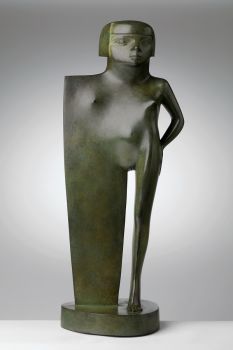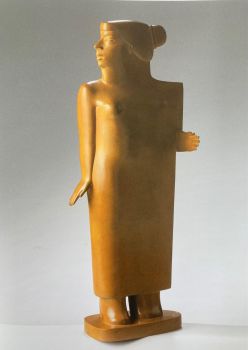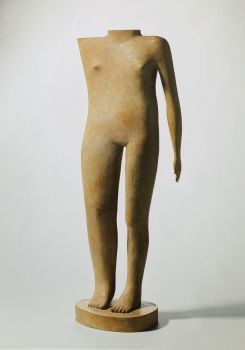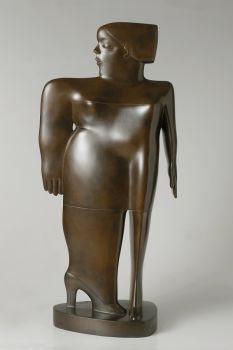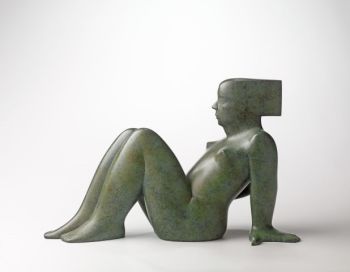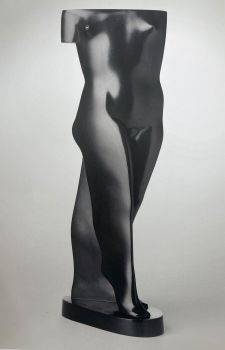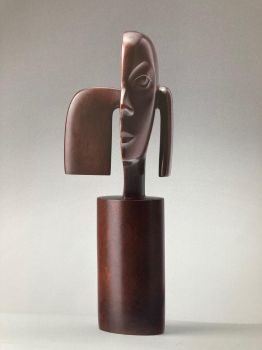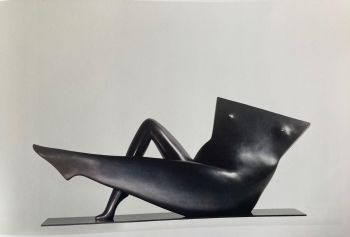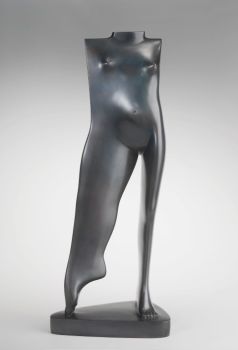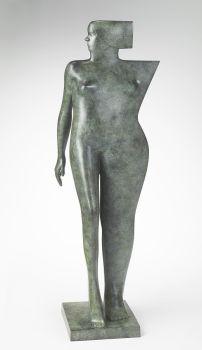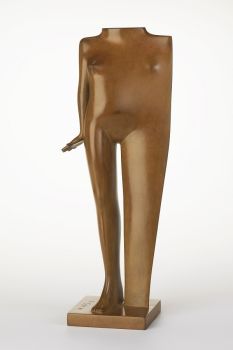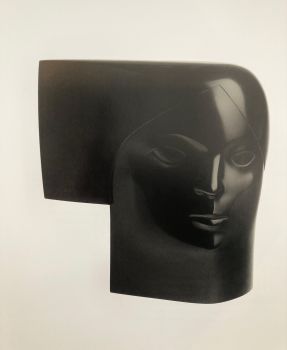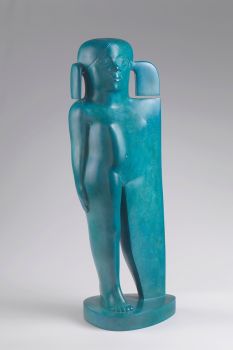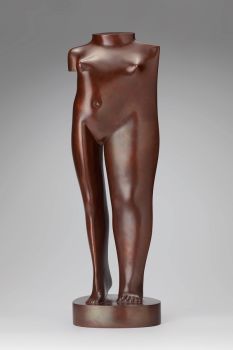The ingenious simplicity of KOBE
Kobe, artistic pseudonym of Jacques Saelens, was a Belgian sculptor. He was born in Kortrijk on 4 September 1950 and died unexpectedly in Saint-Julien (Var) in France on 26 October 2014. Kobe died at the age of 64 and left behind an impressive oeuvre. Kobe created his own style of sculptures and formed figures that are immediately recognisable.
 'The two faces', Kobe, 2006, bronze (37 x 30 x 39 cm)
'The two faces', Kobe, 2006, bronze (37 x 30 x 39 cm)
The power of simplicity, emotion and universal beauty
Kobe's works are about simplicity, purity and beauty. The viewer must enjoy his work, was his credo. He made his sculptures both wide and thin and knew how to distort reality in such a way that it remained recognisable and aesthetic. On the border between abstraction and figuration, using round shapes and a strict play of lines, he created images of women and men, torsos and horses.
 'Pegasus III', Kobe, 2005 (42 ⨯ 33 ⨯ 10 cm)
'Pegasus III', Kobe, 2005 (42 ⨯ 33 ⨯ 10 cm)
In this way he wanted to give shape to an emotion and mood such as happiness, connectedness, love or friendship. The bronze statues have a beautiful patina. Softly shiny, in deep black, brown or bright green-turquoise colours, which emphasise the play of lines. Or just matt earth tones that give the statue an appearance as if it were stone or ceramic.
Associations with Egyptian, Etruscan or African statues are certainly there, but also with modern art movements such as cubism because these artists also played with and used different viewpoints within one work. His statues are three-dimensional par excellence. To fathom and understand them, you have to walk around them and experience for yourself how the statue changes again and again. Remarkably intelligent and surprising, but above all breathtakingly beautiful.
 'Girl with pigtails', Kobe
'Girl with pigtails', Kobe
Fascination with ancient cultures
Kobe was born as Jacques Saelens in a family of seven children. His father had little confidence in an artistic career for his son. Nevertheless, Jacques chose the art academy and took sculpture lessons at the Royal Academy of Fine Arts in Kortrijk as well as visual arts lessons, specialising in sculpture at St. Lucas Ghent and St. Lukas Brussels.
Fascinated by the ancient cultures of Central and South America, Africa and Asia, Kobe travelled the world to develop his artistic vision. These journeys had a great impact on his work: sometimes his sculptures resemble ancient fertility statues or religious Mayan sculptures, but always with the influence of rational modern and abstract art.
 'Centauro 2006', Kobe (56 ⨯ 35 ⨯ 12 cm)
'Centauro 2006', Kobe (56 ⨯ 35 ⨯ 12 cm)
Flirting and Wrestling
Until the end of the eighties he exhibited sporadically. His real breakthrough came in the early nineties when his oeuvre had taken shape. Again and again, broad and at the same time thin figures complement his visual universe. Kobe flirts and wrestles at the same time with his boundless imagination and the craft that has grown over the years: how can you manipulate reality without your visual language becoming illegible and betraying its simplicity?
 'Puledro (small)', Kobe, 2009, (28 ⨯ 20 ⨯ 10 cm)
'Puledro (small)', Kobe, 2009, (28 ⨯ 20 ⨯ 10 cm)
Hard work and perfection
His sculptures have always gone through a long process. Several months elapsed between idea and finished image. Every day began with drawing and sketching, the only way to create order in the chaos in his head. In these preliminary studies, he almost completely eliminated the third dimension.
To translate this into reality, mathematical thinking was required. This is not an ideal situation for simultaneously wide and wafer-thin sculptures made of marble or bronze. Form problems and a precarious balance were common, but Kobe was a fervent lover of craftsmanship and practice: solving these practical problems drove him to perfectionism.
 'Girl with pigtails', Kobe
'Girl with pigtails', Kobe
Kobe first converted his calculations into wet clay around a sturdy armature and made a plaster model of it. He then planed, filed and polished this until he was satisfied, and that could take a long time. Kobe left nothing to chance. Everything had to be well thought out and geometrically reasoned. He masked this rationality with a seemingly casual attitude, faces without features and a smoothness that reflects the light.
The female form and the horse
Two themes dominate Kobe’s oeuvre: the female form in all its simplicity and mystery, and the horse as a symbol of strength, camaraderie and solidarity. Kobe did not want to overcomplicate his art or imbue it with hidden meanings. Instead, he was constantly searching for simplicity and beauty. With his creations, Kobe brought feelings to life for the world to enjoy: happiness, affection, love and friendship.
 'High heels true love, Kobe', 2006 (70 ⨯ 30 ⨯ 17cm)
'High heels true love, Kobe', 2006 (70 ⨯ 30 ⨯ 17cm)
Honorable task
Since 1995, Kobe lived and worked in Pietrasanta, the Italian historical center for artists and sculptors, close to the bronze foundries and marble quarries of Carrara. Kobe left behind an impressive oeuvre of marble and bronze sculptures.
Now his son Albin Saelens, out of love for his father and out of respect for his artistry, has taken it upon himself to continue his father’s artistic legacy
to honor. Albin promotes his father's oeuvre, publishes (Kobe – Ingenious Simplicity, 2016, 252p.) and organizes exhibitions.
 'Pride cut loose', Kobe, height 120 cm
'Pride cut loose', Kobe, height 120 cm
Representation of Kobe by Morren Galleries
Albin also chose a number of locations that continue to draw attention to his father's work, including Morren Galleries. The Utrecht gallery, which normally only represents the work of living artists, did not hesitate to include Kobe's work in their stable.
Gallery owner Eric Morren had been following Kobe closely for years and had always wanted to represent his work: "It is of course a shame that this is happening posthumously, because I would have loved to meet and get to know the master personally. On the other hand, I think it is fantastic that his son Albin chose him to keep his father's work alive. Something that I consider a special and honorable task," says Eric Morren.


